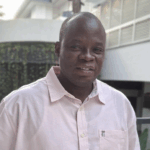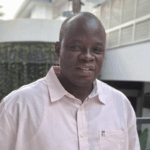
Ghana’s Infrastructure Crisis and Economic Imperative
Ghana’s economic trajectory is promising, with steady growth averaging over 5% annually in recent years, driven by sectors like agriculture, services, and mining. Yet, this progress is hampered by a chronic infrastructure deficit that undermines productivity, stifles job creation, and perpetuates inequality. Pothole-filled roads delay goods transport, erratic power supplies disrupt manufacturing, and inadequate water systems expose millions to health risks. According to estimates by the Africa Development Bank, Ghana requires at least $37 billion annually over the next three decades to address these gaps, covering everything from transport networks to energy grids and urban utilities.
Traditional funding sources—government budgets, foreign aid, and loans—fall short amid fiscal constraints. The country faces constraints of rising debt of as high as 85.7% of GDP in 2022 but around 44.5% of GDP as at October 2025 with total investment hovering at just 10% of Gross Domestic Product (GDP) as of April 2025 from 27.7% in December 2015 and above only Eritrea (6.75%) and Comoros (4.13%) in Sub Saharan Africa.
This leaves a financing shortfall equivalent to 2.8% of GDP, far exceeding Ghana’s peers of 1.7%. These gaps not only hamper productivity but also exacerbate unemployment, with youth joblessness at 13.6% per cent in 2024 (from 14.6% in 2023 and the informal sector employs nearly 80% of the labour force (workforce)—bearing the brunt and contributing only 27% of GDP
The urgency is clear. Quality infrastructure underpins 92% of the 169 targets across all the Sustainable Development Goals, influencing economic participation and opportunity, political empowerment, educational attainment, and health and survival. In Ghana, poor roads limit market access for smallholder farmers, who produce 80% of the nation’s food, as only 25% of the rural population has access to roads, as to 34% of the total African population having access to roads. Meanwhile, road transport carries 80%–90% of freight and passengers in the country.
The situation is no better for social infrastructure, with only 34% of the population having access to improved sanitation and a slightly better situation for clean water at about 65%. Also, only 5% of arable land is irrigated. Restricted year-round farming and underinvestment in value-addition infrastructure such as harvesting, storage, and processing facilities (cold storage and warehouses), lead to 30% of postharvest losses. Meanwhile, Ghana spends over $2 billion annually on food imports, including $600M on rice and $400M on poultry, despite possessing vast agricultural potential. Also, energy outages cost industries up to 10% of sales despite 85% to 90% access rate. Water access reaches only 80% in urban areas, leaving rural communities vulnerable.
Closing these gaps could boost GDP by 1-2% annually, create 1.5 million jobs—many for youth and women—and reduce poverty, where over 39.5% rural dwellers live below $1.90 a day. Amid this challenge lies an untapped powerhouse: the nation’s pension funds, which ballooned to over GHS86.4 billion ($8.23 billion) in assets, with private pensions accounting for around GHS 57 billion ($5.43 billion). However, over 80% of these assets are allocated to short-term treasury bills and government bonds with maturities under three years. If strategically redirected, these funds could inject patient, long-term capital into vital projects, transforming Ghana’s landscape while delivering stable returns for retirees and investors.
The Current State of Pension Funds in Ghana
Ghana’s pension system operates under a three-tier structure: Tier 1 (mandatory public, managed by SSNIT), Tier 2 (mandatory occupational), and Tier 3 (voluntary). SSNIT, the flagship fund, holds significant assets but invests predominantly in government bonds and real estate. Private funds, growing rapidly due to reforms like the 2008 National Pensions Act, manage GH¢57 billion ($5.43 billion). Despite this progress, Ghana’s pension funds currently utilise only 4.4% of the 25% limit for alternative investments like infrastructure, lagging behind its African peers such as Nigeria, which uses 34% of a 5% cap, and South Africa, which allocates around 8% under its 15% regulatory ceiling. This compares with 18% in Europe and 24% in the US, showing a wider African pattern of pension fund underutilisation, with many African markets yet to seize opportunities of progressive regulations and maturing investment ecosystems. This conservatism stems from regulatory constrained, structural gaps, cautious investment culture, and risk aversion post-debt restructuring.
Recent events in Ghana, including treasury bill yields dropping from 26% in early 2025 to between 10.2% to 13.8% by August, highlight the need for diversification. Without it, funds face correlated risks from sovereign exposure, as evidenced by the Domestic Debt Exchange Programme (DDEP’s) modification losses and vulnerabilities. The impact of the DDEP on pension funds (especially those managed by the private sector) goes beyond the value of annual cash flows under the restructured bonds. Generally, the interconnectedness of the pensions industry with the overall financial sector shows that shocks in other financial sectors could negatively impact the fortunes of the pension funds.
In the broader African context, pension assets have surged from ¢500 billion in 2020 to $1.1 trillion, projected to hit $7.3 trillion by 2050. Pension funds are a formidable source of capital to finance the continent’s transformation. Yet, allocation to infrastructure remains below 2.7%, despite the continent’s infrastructure needs of $181-$221 billion per year over 2023-2030 and a financing gap of as much as $108 billion. If 20% were invested, it could add $77 billion yearly. Ghana’s funds, at 18.5% contribution rates, mirror this trend but lag in innovation.
The Case for Redirecting Pension Investments
Currently, Ghana’s pension assets are overwhelmingly parked in short-term government securities—over 80% in short-term treasury bills and bonds with maturities under three years. This conservative approach, driven by fiduciary duties to preserve capital and ensure liquidity, has created a paradox: billions in long-horizon savings are funnelled into low-impact, short-term instruments that do little to build the nation’s future. This allocation not only exposes funds to concentration risks, as seen in the 2023 Domestic Debt Exchange Programme’s (DDEP) impact, but also misses opportunities for higher, inflation-hedged gains from productive investments.
Pension funds, with their stable cash flows and long horizons, are perfectly positioned to step in, mirroring successful models elsewhere. The proposal is straightforward: mandate 5-10% of pension assets for infrastructure, prioritising transport, energy, water, and digital networks. This could unlock GHS 8-10 billion ($1 billion) in private capital investment annually, channelled through de-risked vehicles like infrastructure bonds and guarantees. A government-backed entity, modelled on Nigeria’s InfraCredit, could guarantee bonds, enhance credit profiles and cover 75% of FX risks. Local currency denomination would shield against cedi depreciation, which saw 30% depreciation in 2021, 27.8% in 2022, and 19.2 in 2024.
Lessons from Africa and the World
Lessons from Africa abound. South Africa’s Government Employees Pension Fund invested USD 119 billion in a 100MW solar plant and hospitals, yielding 8-12% returns while creating jobs. Nigeria’s ARM-Harith Fund drew $41 million (£31 million) (out of a target of $200 million) from pensions for climate-resilient energy and digital infrastructure, using liquidity windows for early payouts, estimated to generate approximately 3,000 green jobs. Their ultimate goal is to unlock Nigeria’s institutional capital—over $2 trillion continentwide, most of which remains underutilised. In West Africa, the West African Monetary Zone explores pension-backed utilities, with funds supporting cross-border power. Kenya’s consortium mobilised $500 million for roads, reducing travel times and boosting trade in the Horn of Africa.
Globally, Canada’s Pension Plan Investment Board owns toll roads and utilities, delivering inflation-protected gains of 8-12% returns over decades, while Australia’s superannuation funds finance urban transport and energy grids, proving dual mandates of security and development. In Sub-Saharan Africa, similar initiatives in the East African Community and West African Economic and Monetary Union (UEMOA) show how pension investments in agriculture and transport have enhanced food security and trade. These examples demonstrate that prudent allocations not only generate returns but also catalyse broader economic transformation, reducing reliance on external debt and fostering resilience.
Proposed Mechanisms and Reforms
Public-Private Partnerships (PPPs) would be the linchpin, blending pension capital with private expertise to de-risk projects. Ghana’s Public Private Partnership Act of 2020 provides a framework, but implementation has been slow due to regulatory hurdles and capacity gaps. Strengthen PPPs under Act 1039 by establishing a Project Development Facility for feasibility studies and equity stakes. Shorten procurement timelines—currently years-long, as with the Accra-Cape Coast Road—from concept to close. Build capacity via a Pan-African Pension Academy, training 500 managers yearly on risk assessment. Offer tax exemptions on bond returns and incentives for local content.
Empower assemblies like Accra, Kumasi, Tamale, Takoradi, and Secondi Metropolitan Assemblies to issue municipal bonds, tied to revenues like property rates, to fund urban projects. Implementation demands action. Start with regulatory reforms to raise alternative caps to 20%, with a phased 10% mandate over five years. Launch a liquidity facility for 3-5% annual payouts during project gestation. Partner with AfDB, FSD Africa, British International Investment and other development finance institutions for catalytic funding and foreign exchange hedges. Address politicisation by depoliticising projects via NDPC oversight. Ensure macro stability to attract investors, countering cedi depreciation and policy uncertainty.
Potential Impacts, Benefits, and Call to Action
The benefits are multifaceted. Economically, GHS 4 billion (USD 380 million) yearly could build 320–475 km of roads, 47–127 km of railways, 6,000–15,000 km of widespread broadband networks, and add 250–450 MW solar capacity, lifting GDP by 1-2% and stabilising the cedi. Ghana could target the Oti River Bridge expansion to connect rural farmers to markets, dualise the Accra-Cape Coast-Takoradi Road to cut transport costs by 25-30%, or solar plants in the north to add 500 megawatts to the grid, reducing reliance on imported fuels. Socially, 1.5 million jobs—60% youth, 40% women—would emerge, with micro-pensions enrolling 20 million informal workers by 2030, adding GHS 50 billion. Inclusivity rises as cocoa farmers and women traders gain security. By 2030, this closes 20% of the gap, enhancing resilience against climate shocks, where Africa needs $2.8 trillion for Nationally Determined Contributions (NDCs) but gets only 12%.
Unlocking pension funds is Ghana’s path to sovereignty and prosperity. With GHS 86.4 billion at stake, a 5-10% shift transforms deficits into dividends. Ghana’s future—paved roads, lit homes, flowing water—awaits. Ghana cannot afford inaction. Over-reliance on short-term borrowing perpetuates fiscal cycles, while external aid often comes with strings attached. Unlocking pension funds isn’t just about building bridges and power lines—it’s about securing financial sovereignty, fostering inclusive growth, and ensuring retirees benefit from a thriving economy. Policymakers must act now: raise alternative investment caps to 10%, streamline PPP approvals, and foster collaborations between the National Pensions Regulatory Authority, Securities and Exchange Commission, and private investors. The future of Ghana’s infrastructure—and its people—depends on it.
*******
The writer Julius Karl D. Fieve is an innovative Gender and Development Finance Expert with over 12 years of experience driving impactful initiatives across Africa. Julius holds master’s degrees-an MSc in Africa and International Development from the University of Edinburgh, an MSc in Economics and BSc. Actuarial Science, both from the Kwame Nkrumah University of Science and Technology (KNUST).
- President Commissions 36.5 Million Dollars Hospital In The Tain District
- You Will Not Go Free For Killing An Hard Working MP – Akufo-Addo To MP’s Killer
- I Will Lead You To Victory – Ato Forson Assures NDC Supporters
Visit Our Social Media for More




